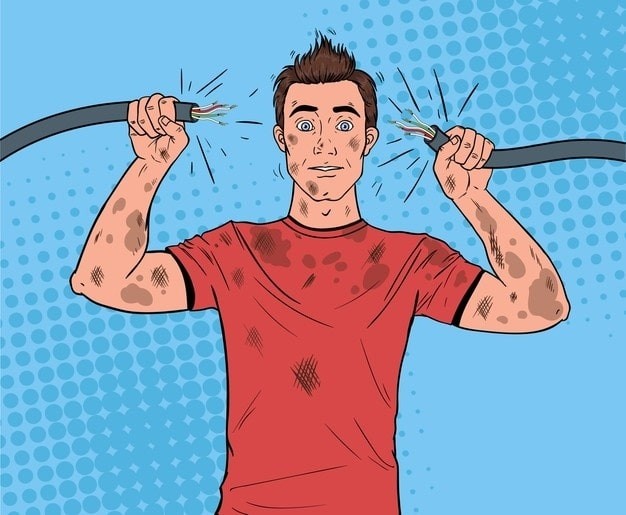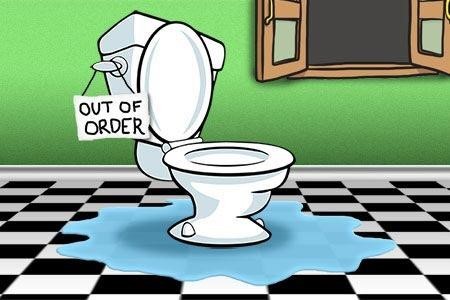
DIY Kitchen Plumbing Ideas For Your Kitchen Renovation
With evolving times, our kitchen has also evolved. It used to be considered only a room for cooking before, but now people recognize its significance. So, people are now using ideas and innovation to make kitchens attractive and comfortable spaces in their houses.
Many people in today's date are encouraged to do things themselves, widely popularized by the term 'DIY'. People are trying to build and renovate stuff themselves, which also includes kitchen renovation.
There are many aspects people should consider while renovating the kitchen. However, kitchen plumbing is an aspect that should be addressed. In today's article, we will discuss step-by-step DIY kitchen plumbing ideas for your kitchen renovation. Let's start.
Create a Proper Plan

The first step in renovating your kitchen plumbing should be creating a proper plan. You should be sure about the places you will place specific things. Visualize a rough picture of the finished product you want, and then start working towards it. This way, it will be easier for you during the renovation process to meet expectations. Now that you have created a proper plan let's look into DIY kitchen plumbing ideas.
DIY Ideas For Kitchen Plumbing
We have presented you with a list of DIY kitchen plumbing ideas and a step-by-step guide to execute them.
Upgrade Your Faucet

Upgrading the kitchen faucet can give your kitchen a different look. Selecting a high-end faucet will give your kitchen a premium look. Also, there are faucets with various features, like touchless control, pull-down sprayers, or filtered water options, which will make your kitchen more efficient.
Now in DIY kitchen plumbing, let's look step-by-step at the basics you can do to install a new faucet yourself.
Step 1: Locate and turn off the water supply.
Step 2: Use a basin wrench to loosen the nut under the sink.
Step 3: Clean the sink surface around the faucet hole.
Step 4: Now, place the gasket, base plate and/or mounting hardware on the sink according to the instructions.
Step 5: Feed the faucet supply lines and any other faucet components through the sinkhole.
Step 6: Secure the faucet by tightening the mounting nuts from underneath the sink using a basin wrench.
Step 7: Connect the supply line to the shut-off valves.
Step 8: If there are any leaks, tighten the connections further.
This way, you can properly replace your old faucet yourself. But you must not hesitate to contact a professional if there is any difficulty or if there is leakage. The next idea for kitchen plumbing renovation is to install a water filtration system.
Install a Water Filtration System

The next thing after getting a better sink you can do is install a water filtration system. You can choose to add a filter under the water sink or make a filtration system that filters water from your entire house.
Now, in DIY kitchen plumbing, let's look step-by-step at how you can install a water filtration system on your own.
Step 1: First, you have to select the right filter system which meets your water filtration needs. While buying consider facts like price, filter capacity and the types of contaminants it removes.
Step 2: Turn off the water supply.
Step 3: Install the filtration system:
Step 4: Make sure there is enough clearing under the sink and that the filter housing is fit.
Step 5: Use appropriate tubing to connect the filter inlet to the supply line.
Step 6: Then, connect the filter water line to the faucet.
Step 7: Some filters may need an electrical connection, such as for automatic turn-off valves or water quality monitors. Follow the manufacturer's instructions.
Step 8: Turn the water on, check all the connections for leaks, and tighten the fittings as needed.
Step 9: At last, run water through the filter for several minutes to flush out any carbon fines or trapped air.
You can install a filtration system yourself like this, but remember to ask for help from a professional plumber if you face difficulty or if there is leakage. Next on the list is changing the sink drain.
Upgrade Sink Drain

Replacing an old, corroded sink drain with a new one can change the look of the kitchen and increase the functionality of your kitchen sink.
In DIY kitchen plumbing, let's examine step-by-step how to replace your old sink drain.
Step 1: Gather the necessary pieces of equipment and material
- New sink drain
- Plumber's putty
- Basin wrench
- Pliers
- Bucket or towels
Step 2: Like with every other step, turn off the water supply.
Step 3: Remove the drain by unscrewing it using a basin wrench and unscrew the drain collar from the sink.
Step 4: Use a putty knife or cloth to remove the debris from the sink and ensure a clean and smooth opening.
Step 5: Install the new drain:
- Apply a small amount of plumber's putty around the underside of the new drain flange.
- Please insert the new drain into the sink opening and twist it into place.
- Secure the drain collar from underneath the sink using the basin wrench.
- Attach the drain pipe(P-trap) to the new drain unit and use a plier to tighten the slip nuts at both ends
Step 6: Turn on the water and check for any leaks around the new drain.
Step 7: Lastly, clean up any excess plumber's putty around the drain.
This is a step-by-step guide to installing a new drain sink on your own. But remember to take your time and contact a professional if you need any help or if there is leakage. The next idea on the list is to extend the sink plumbing.
Extending or Relocating the Sink Plumbing
If you want to move or expand the location of your kitchen sink, you can extend the existing plumbing lines to the new position. This is more of a complex DIY project in kitchen plumbing. Here are some general steps:
Step 1: Gather pieces of equipment and materials.
- New plumbing pipes(PVC, copper or PEX)
- Fittings (elbows, tees, coupling)
- Basin wrench
- Hacksaw or pipe cutter
- Pipe wrench
- Plumber's putty
- Teflon tape
- Bucket or towels
Step 2: Turn off the water supply.
Step 3: Unscrew the drain pipe from the sink drain and remove it.
Step 4: Disconnect the supply line from the faucet and shut off the valves.
Step 5: Measure the distance you need to extend the drain line to the new location.
Step 6: Cut the existing drain pipe using a hacksaw or pipe cutter, leaving enough length to connect the new extension.
Step 7: Assemble the new drain pipe section using the appropriate fitting and connections and secure them with the plumber's putty or silicone sealant.
Step 8: Measure the distance needed to extend the hot and cold supply lines.
Step 9: Cut the existing line and add new sections using elbows and tees as needed.
Step 10: Use Teflon tape on the threaded connection to ensure a tight seal.
Step 11: Plan the path for new drain and water supply lines, ensuring they have a steady slope, avoid any obstructions, and secure them with hangers and straps if needed.
Step 12: Connect the extended drain line to the new- sink drain line and supply to faucets.
Step 13: Turn on water and inspect for any leakage.
This is one of the more complex kitchen plumbing tasks. If you encounter difficulty, it is better to ask for help from a professional plumber. Last on the list is installing a pot filler faucet.
Installing a Pot Filler Faucet

This type of faucet, mounted on the wall above the stove, can be a handy addition for filling pots and kettles without having a sink to carry them.
Now in this DIY to kitchen plumbing, let's look into installing a pot filler faucet yourself.
Step 1: Gather the necessary pieces of equipment and materials.
- Pot filler faucet
- Plumber's putty
- Teflon tape
- Basin wrench
- Adjustable wrench
- Drill bits
Step 2: Turn off the water supply.
Step 3: Measure and mark the location where you want to install the pot of filler on the wall.
Step 4: Use a drill to create a hole large enough to accommodate the pot filler supply line.
Step 5: Cut the cold water supply line, leaving enough length to connect to the pot filler.
Step 6: Apply the plumber's putty around the underside of the mounting plate.
Step 7: Then, insert the plate into the wall opening and secure it in place.
Step 8: Use Teflon tape on the threads of the pot filler's supply line.
Step 9: Attach the supply line to the cut end of the cold water line using appropriate fitting and tightening with an adjustable wrench.
Step 10: Apply the plumber's putty around the base of the pot filler and insert it into the mounting plate.
Step 11: Secure the pot filler in place using the basin wrench to tighten the locking nut.
Step 12: Turn on the water supply and check for leakage.
Step 13: Lastly, ensure the pot filler swings and operates freely.
This is also another challenging DIY project. You should seek professional help in case of leakage or difficulties installing.
Conclusion
These are five DIY kitchen plumbing projects you can do to give your kitchen a new look. They will not only improve your kitchen's visual appeal but also make it more efficient. Furthermore, in case you need any help regarding plumbing service in Kathmandu Valley, please get in touch with A2Z Marmat. We are here to address your home repair and renovation needs in one call.
FAQs on DIY Kitchen Plumbing
What is the first step in a kitchen plumbing renovation?
The first step while renovating your kitchen plumbing should be creating a proper plan. You should be sure about the places you will place specific things and visualize a rough picture of the finished product you want, then start working towards it.
How do I upgrade my kitchen faucet as a DIY project?
To upgrade your kitchen faucet as a DIY project:
- Locate and turn off the water supply below the sink and turn on the faucet to release the remaining water.
- Use a basin wrench to loosen the nut under the sink and remove the old faucet.
- Clean the sink surface around the faucet hole, and place the gasket, base plate, and/or mounting hardware on the sink.
- Feed the faucet supply lines and components through the sink hole, and secure the faucet by tightening the mounting nuts from underneath using a basin wrench.
- Connect the supply lines to the shut-off valves, turn the water back on, and check for leaks.
What are the steps to install a water filtration system under the kitchen sink?
To install a water filtration system under the kitchen sink:
- Select the correct filter system that meets your water filtration needs.
- Turn off the water supply.
- Install the filter housing, connecting the filter inlet to the water supply line and the filter outlet to the faucet.
- If required, make any necessary electrical connections for the filter system.
- Turn the water back on, check for leaks, and flush the system.
How do I upgrade my kitchen sink drain as a DIY project?
To upgrade your kitchen sink drain as a DIY project:
- Gather the necessary materials like a new sink drain, plumber's putty, basin wrench, and pliers.
- Turn off the water supply.
- Remove the existing drain by unscrewing it with a basin wrench and clean the sink opening.
- Apply the plumber's putty and install the new drain, securing it with the basin wrench.
- Attach the drain pipe (P-trap) and tighten the slip nuts.
- Turn the water back on and check for leaks.
What are the steps to install a pot filler faucet as a DIY project?
To install a pot filler faucet as a DIY project:
- Firstly, turn off the water supply.
- Measure and mark the location of the pot filler on the wall, then drill a hole to accommodate the supply line.
- Cut the cold water supply line, leaving enough length to connect to the pot filler.
- Apply the plumber's putty and install the mounting plate, then attach the pot filler's supply line to the water line.
- Insert the pot filler into the mounting plate, secure it with a basin wrench, and check for leaks.


